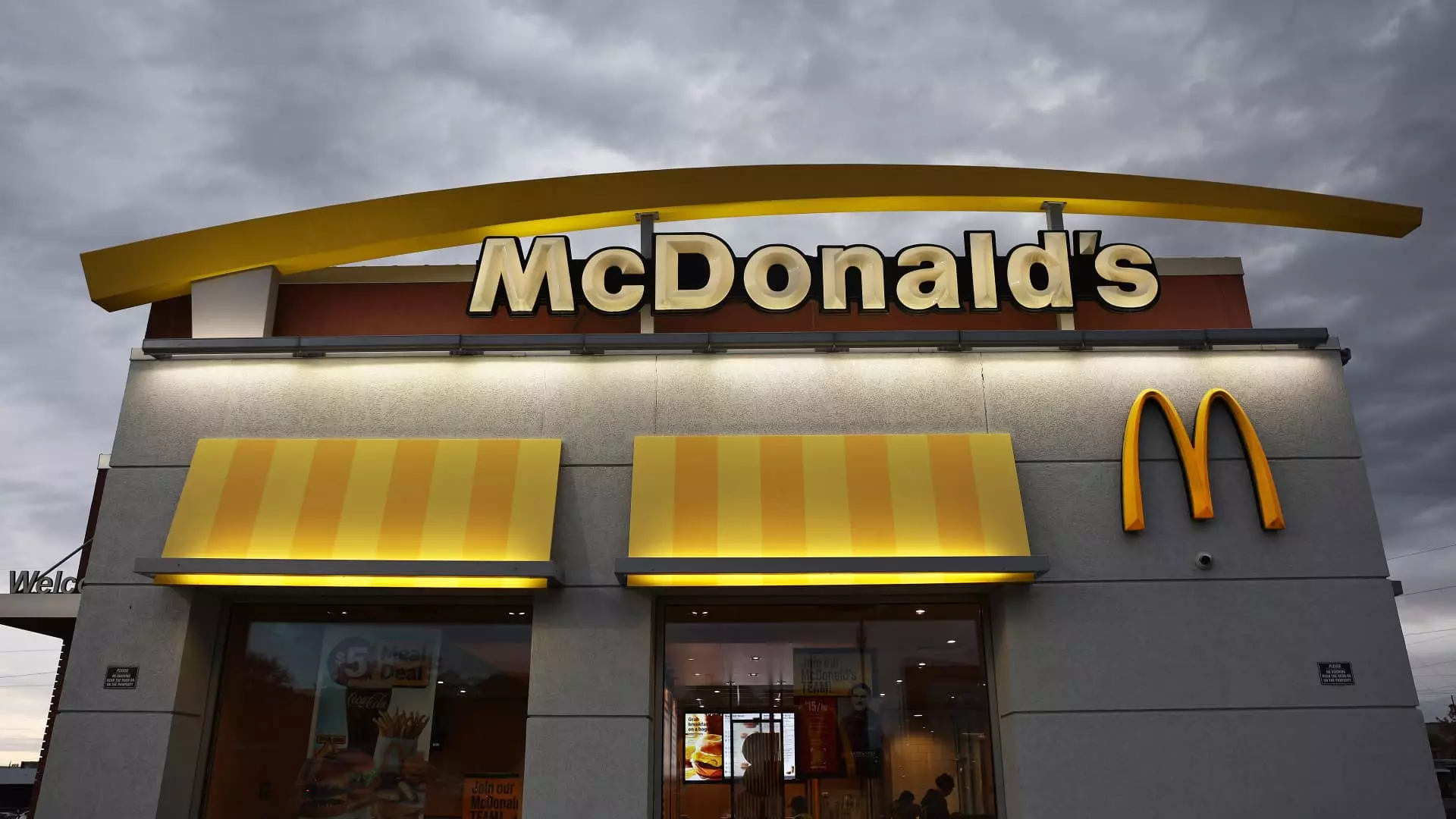In a recent quarterly report, McDonald’s faced significant challenges that impacted its revenue performance. The fast-food titan’s results for the fourth quarter exhibited a disappointing trajectory, primarily influenced by a concerning E. coli outbreak tied to its renowned Quarter Pounder burger. This scenario paints a complex picture of a once-unassailable brand grappling with both operational hiccups and shifts in consumer behavior. This article delves into the specifics of McDonald’s quarterly performance, examining the factors at play and what implications they bear for the company moving forward.
McDonald’s revealed earnings per share of $2.83 for the quarter, matching Wall Street’s expectations yet overshadowed by other aspects of the financial report. The fast-food giant’s revenue of $6.39 billion fell short of analysts’ forecasts, which had anticipated $6.44 billion. Year-on-year performance showed a slight contraction with net income down to $2.02 billion from $2.04 billion. While these figures reflect a stable earnings per share, the lackluster revenue growth revealed the underlying troubles the company’s U.S. operations faced.
Despite the overall same-store sales growth of 0.4% beating predictions of a decline, this statistic masks the steep drop in its U.S. restaurants, which witnessed a 1.4% decrease. Such disparities indicate a bifurcated market performance, with international divisions faring better overall compared to the domestic front.
The outbreak of E. coli linked to McDonald’s products had a profound impact on consumer trust and market performance. The Centers for Disease Control and Prevention (CDC) identified the fast-food chain’s Quarter Pounder burgers as the source of a severe health scare, culminating in a drastic drop in customer traffic. Although McDonald’s swiftly moved to change suppliers for the implicated ingredient—slivered onions—the outbreak’s ramifications were immediate, causing footfall in restaurants, particularly in affected states, to plummet.
The timing was particularly unfortunate as it coincided with a quarter in which the chain was attempting to rejuvenate sales with value meal offers. While the introduction of a $5 combo meal initially attracted price-sensitive customers and provided a temporary sales boost, these measures were undermined by the outbreak’s fallout that left many customers wary of dining at the franchise.
Consumer Behavior and Sales Dynamics
Analysis of consumer behavior reveals a disturbing trend: even as traffic remained slightly positive, customers curbed spending. The introduction of discounted meals creates an expectation of value; however, it requires that customers also opt for higher-priced items to maintain overall profitability. This has brought McDonald’s sales strategy into question as analysts underscore the necessity of tandem sales with discount offerings for sustained financial health.
Compounding the concerns are external market factors, as intensifying competition within the fast-food sector also plays a role in shifting consumer choices. The loyal customer base that once defined McDonald’s is evolving, and adapting to these changes is critical for maintaining relevance in a saturated market.
While McDonald’s domestic struggles took center stage, the company’s international divisions showcased resilience. Regions including the Middle East and Japan reported substantial same-store sales increases, with growth rates of 4.1% and 0.1%, respectively. Such performance highlights a striking contrast to the challenges faced in the U.S., suggesting that much of McDonald’s ongoing strength lies in its global presence. Despite setbacks in some markets like the UK, the overall positive trends internationally indicate potential pathways for recovery.
The challenges reflected in McDonald’s quarterly report underscore the complexities of maintaining dominance in a dynamic and sometimes precarious market environment. The impact of health-related crises on consumer confidence, coupled with the need for adaptive pricing strategies, raises pertinent questions regarding the future of the brand in the U.S. Nevertheless, the strength demonstrated by international markets offers a beacon of hope. Moving forward, McDonald’s will need to focus on rebuilding trust with consumers, adapting to shifting preferences, and leveraging successful international strategies to catalyze a recovery in its U.S. operations. The journey will undoubtedly require more than just price adjustments; it will demand a holistic re-evaluation of the brand’s approach to customer experience and food safety.


Leave a Reply